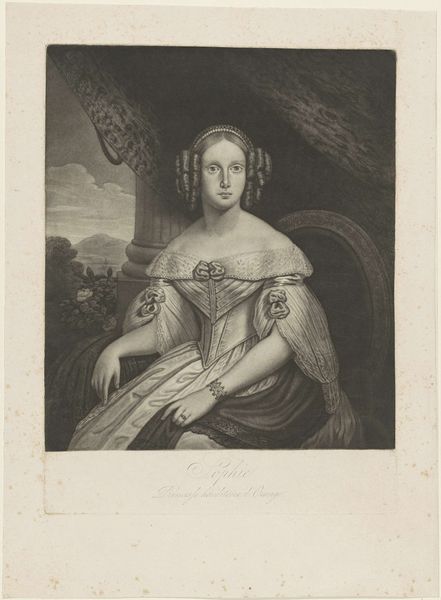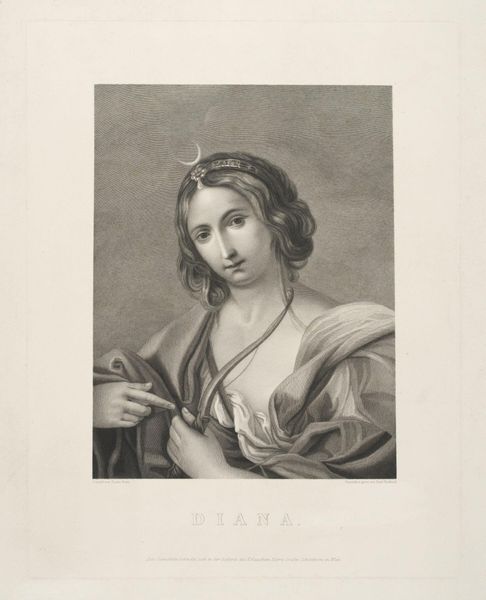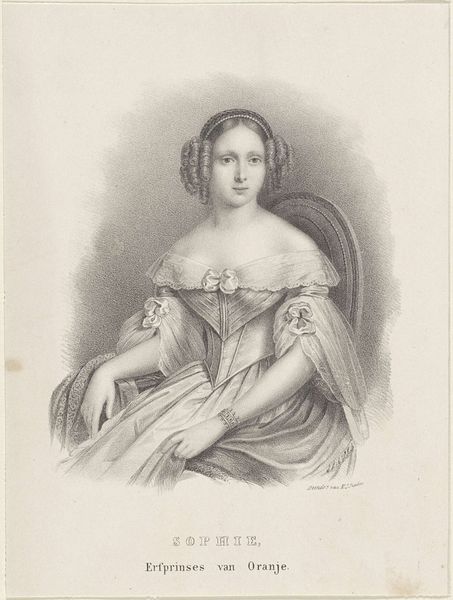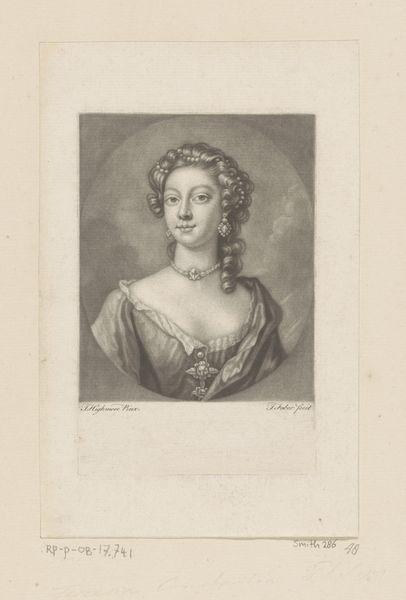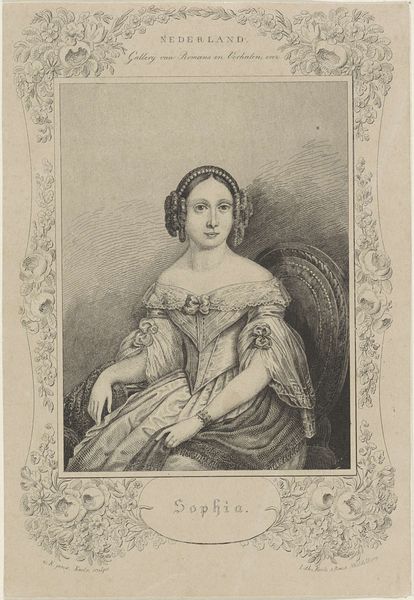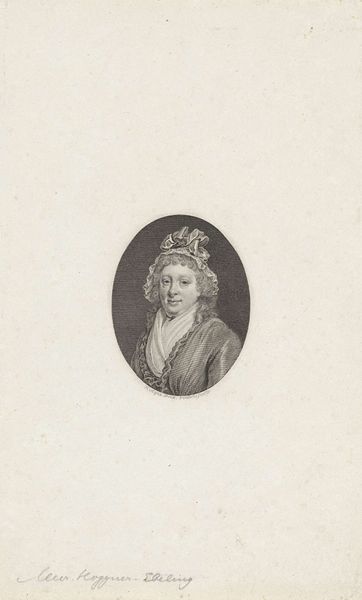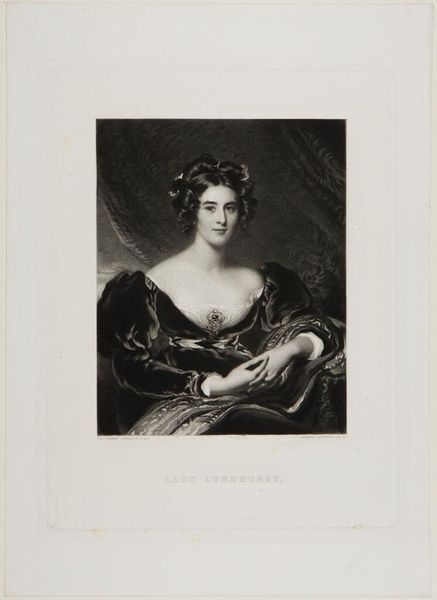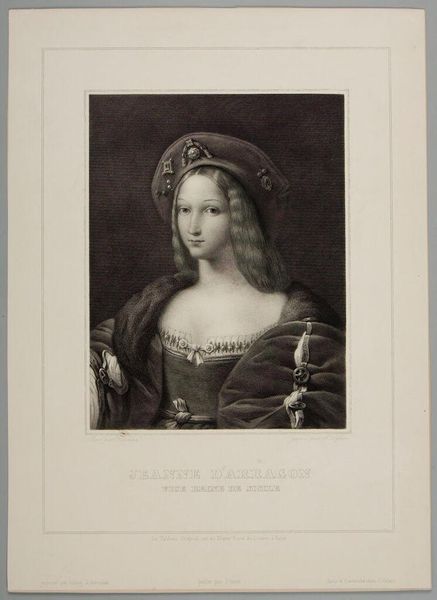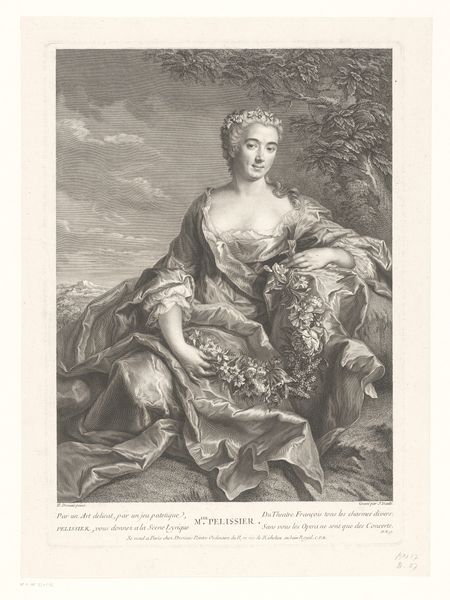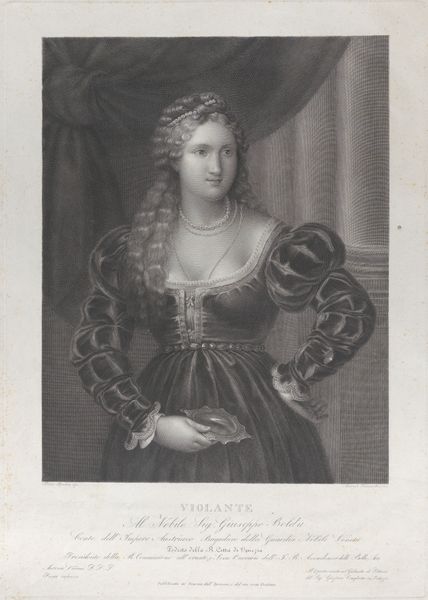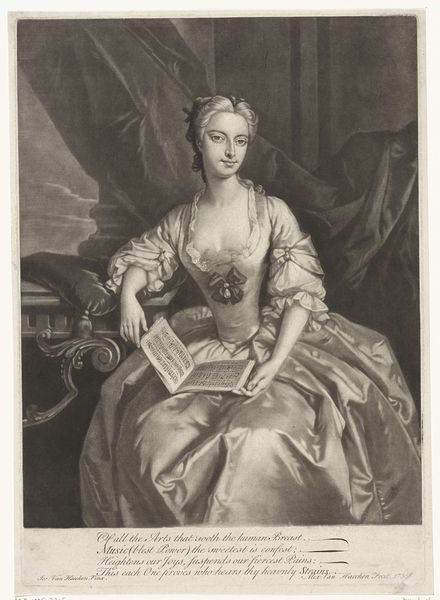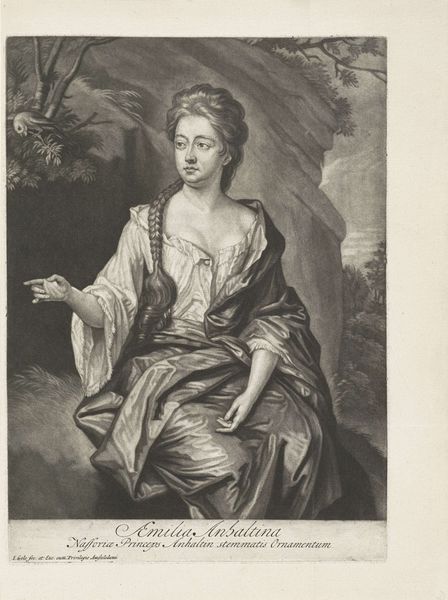
print, engraving
#
portrait
#
aged paper
#
yellowing background
#
photo restoration
# print
#
figuration
#
form
#
romanticism
#
line
#
genre-painting
#
history-painting
#
academic-art
#
engraving
Dimensions: height 518 mm, width 417 mm
Copyright: Rijks Museum: Open Domain
Editor: This is a print from between 1839 and 1850, "Portret van Sophie van Württemberg," by Carel Christiaan Antony Last, housed at the Rijksmuseum. It feels very formal and reserved; what do you see in this piece beyond its surface representation? Curator: Beyond the representation of a royal figure, I see a work deeply embedded in the power structures and gendered expectations of 19th-century Europe. Sophie, as a princess, embodies the restricted roles women of her status were forced into. How does the artist's choice of engraving—a medium capable of such fine detail but also reliant on established conventions—reinforce or perhaps subtly critique these limitations? Editor: I hadn't thought of it that way, but the rigid lines and formality definitely emphasize the princess's constrained position. The delicate details of her dress, the controlled landscape in the background... it all feels very prescribed. Curator: Exactly. And consider the history-painting aspect. How does portraying Sophie as a serene, almost passive figure serve to legitimize her family's reign, and perhaps silence other, more complex narratives about her life? This image becomes part of a larger visual vocabulary reinforcing social hierarchy. Does that give you some insights on her portrayed image? Editor: Yes, it does. It is a powerful statement of her gendered role, the artist places her in history, yes, very insightful. Curator: Reflecting on this portrait, I'm struck by how it invites us to unpack the layers of power, gender, and representation embedded within even seemingly straightforward images. What resonates with you after our conversation? Editor: I see it now. What I initially saw as a simple portrait reveals much more about the construction of identity and the use of art to maintain social order. Thanks for opening my eyes.
Comments
No comments
Be the first to comment and join the conversation on the ultimate creative platform.

